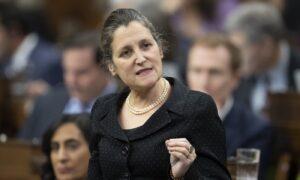
Share To Alt-Tech
This article was originally published on Epoch Times - World. You can read the original article HERE
Seven of Canada’s 10 provinces have a combined public debt exceeding the entire value of their economies, a situation that can stall economic growth and affect living standards, a new study suggests.
Childs based his analysis on previous studies of the relationship between public debt and economic growth. He found that countries whose governments had debt above 90 percent of their GDP tended to experience slower economic growth.
Debt-to-GDP Ratio in Canadian Provinces
In 2022, Manitoba appeared to have the highest debt-to-GDP ratio, at 141.4 percent, meaning that its combined federal and provincial debt far exceeds the province’s GDP. Quebec followed closely, only 0.1 percentage points behind Manitoba, while New Brunswick came third at 135 percent.Alberta had the lowest ratio of all provinces, with its combined debt accounting for 63.8 percent of the province’s GDP. Next was Saskatchewan, whose debt represented 77.5 percent of the size of its economy, and British Columbia, with a ratio of just under 80 percent.
The author noted that, although the federal government’s debt does not exceed the 90 percent threshold at which economic growth could begin to slow, factoring in the provinces’ situations provides a clearer picture.
The federal government’s debt grew by 47 percent in the last five years, from just under $1.1 trillion in 2018 to $1.6 trillion in 2023, the study noted. This represented about 55 percent of its nominal GDP (unadjusted for inflation)–an encouraging outlook since it is below the 90 percent threshold.
“Canada operates as a federation rather than a unitary state,” wrote Childs. “It is essential that Canadian policy makers consider all possible avenues to support economic growth, including taking steps to reduce debt at all levels of government.”
This article was originally published by Epoch Times - World. We only curate news from sources that align with the core values of our intended conservative audience. If you like the news you read here we encourage you to utilize the original sources for even more great news and opinions you can trust!












Comments